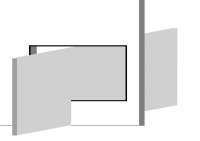CITY IS DEAD / BACK TO INDOOR
Art of recent decades experienced deeply the idea of „Escape from institutions to the streets”. It gave the birth to countless artistic projects in public spaces, interventions and site-specific installations.
But like always - after artists occupying the streets, walls and open spaces, there come another evolutionary processes: privatization, commercialization and famous gentrification. Art contributions to the urban space rise its attractiveness, popularity and also its value for possible investments. In the meantime art market has no problem with absorption of urban art projects into economic circulation. Have Kunstkapitalismus won the game? Will urban art become another complex marketing tool or be only possible in a form of commissioned decorations for commercial zones?
Nietzsche said: God is dead. So could we now also say: City is dead? After so many discourses, debates and discussions on public and urban space, from futurism till now – is there still something new, important or revealing to say about the CITY? Is it not yet finished idea? Or maybe do we live in an illusion that city still belongs to us?
Or... in the time of political and economical exploitation of urban space should we say contrariwise: back from the streets and public space to the galleries or private spaces, closed autonomous zones - just BACK TO INDOOR ?!
Realisation of installation :
depends on availability of spaces, materials and technical support
Option 1:
Street lamp a typical part of street landscape bent out the window/ vitrine into gallery or other building
Option 2:
high home lamp standing on the street and bent out the window to illuminate the room
Option 3:
Exchange between indoor and outdoor. Emigration of the city to indoor spaces. “Transfer” of street pavement, trash bins and other typical urban objects into the gallery / museum / institution . Absorption and inclusion of urban space by institutional spaces.
CITY IS DEAD / BACK TO INDOOR
Art of recent decades experienced deeply the idea of „Escape from institutions to the streets”. It gave the birth to countless artistic projects in public spaces, interventions and site-specific installations.
But like always - after artists occupying the streets, walls and open spaces, there come another evolutionary processes: privatization, commercialization and famous gentrification. Art contributions to the urban space rise its attractiveness, popularity and also its value for possible investments. In the meantime art market has no problem with absorption of urban art projects into economic circulation. Have Kunstkapitalismus won the game? Will urban art become another complex marketing tool or be only possible in a form of commissioned decorations for commercial zones?
Nietzsche said: God is dead. So could we now also say: City is dead? After so many discourses, debates and discussions on public and urban space, from futurism till now – is there still something new, important or revealing to say about the CITY? Is it not yet finished idea? Or maybe do we live in an illusion that city still belongs to us?
Or... in the time of political and economical exploitation of urban space should we say contrariwise: back from the streets and public space to the galleries or private spaces, closed autonomous zones - just BACK TO INDOOR ?!
Realisation of installation :
depends on availability of spaces, materials and technical support
Option 1:
Street lamp a typical part of street landscape bent out the window/ vitrine into gallery or other building
Option 2:
high home lamp standing on the street and bent out the window to illuminate the room
Option 3:
Exchange between indoor and outdoor. Emigration of the city to indoor spaces. “Transfer” of street pavement, trash bins and other typical urban objects into the gallery / museum / institution . Absorption and inclusion of urban space by institutional spaces.
